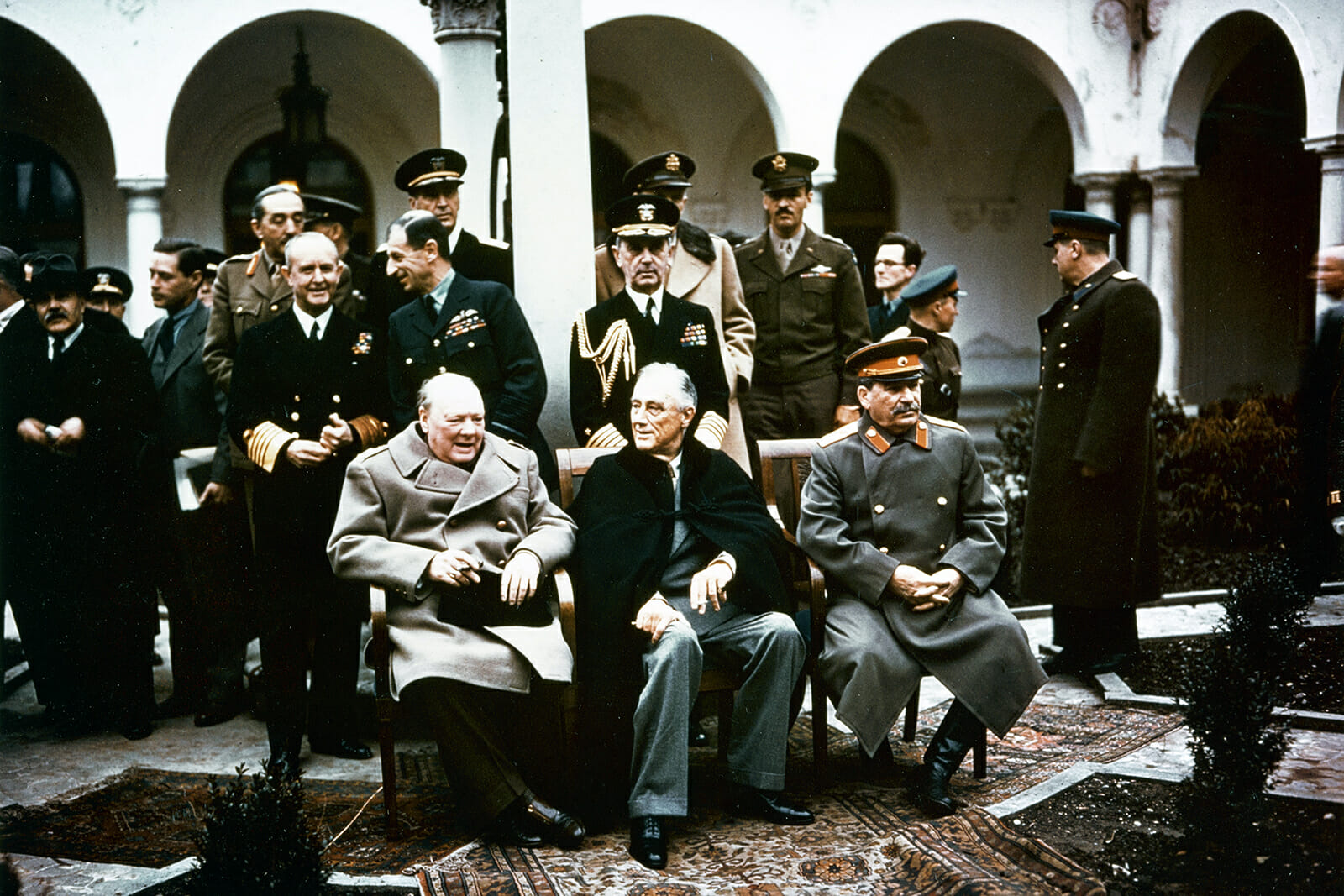
Books
What Realists Get Wrong About the ‘Long Peace’
In a recent New York Times article about the enduring influence and relevance of Hans J. Morgenthau, Barry Gewen cites a dubious endorsement of his subject’s ideas: “As Richard Nixon, channeling Morgenthau, once explained, ‘The only time in the history of the world that we have had any extended period of peace is when there has been balance of power.’”
Considering the fact that Nixon oversaw an expansion of the Vietnam War and the dropping of millions of tons of ordnance on North Vietnam, Laos, and Cambodia, he’s clearly talking about an extended period of peace between great powers. This is what many historians and political scientists refer to as the “Long Peace” since World War II, a period in which a major war between two heavily armed powers hasn’t taken place. During the Cold War, it seemed clear to observers like Nixon that the bipolar distribution of power between the United States and the Soviet Union created the stability which maintained that peace.
In a 1986 article in International Security, the historian John Lewis Gaddis summarized this view: “The Cold War, with all of its rivalries, anxieties, and unquestionable dangers, has produced the longest period of stability in relations among the great powers that the world has known in this century; it now compares favorably as well with some of the longest periods of great power stability in all of modern history.” If that was true almost 35 years ago, the relative peace and stability of the postwar period should be regarded as an even more impressive historical aberration today – the Long Peace has grown even longer.
However, what Gaddis and Nixon regarded as the key explanation for the Long Peace – the balance of power between the United States and the Soviet Union – clearly wasn’t the only reason that great power conflict was kept in check. We’ve now had three decades of unipolarity, with the United States as the dominant superpower in the world, but there has been no outbreak of great power warfare. While we take this peace for granted, it certainly wasn’t such an obvious outcome at the end of the Cold War – the realist international relations scholar John Mearsheimer, for instance, predicted in 1990 that the “prospect of major crises, even wars, in Europe is likely to increase dramatically now that the Cold War is receding into history.”
Some of Mearsheimer’s predictions sound bizarre 30 years after they were made: the U.S. would probably “abandon” Europe, NATO would likely disintegrate, Germany would become a menace to its neighbors (possibly invading smaller states in Eastern Europe to create a buffer between Berlin and Moscow), and so on. It’s no wonder that Mearsheimer believed “we are likely soon to regret the passing of the Cold War.”
Of course, none of these predictions were realized, but they weren’t unreasonable assumptions for someone who accepted the balance of power logic that was so common during the Cold War. However, while Gaddis and Mearsheimer couldn’t see into the future, Gewen wrote his article about Morgenthau earlier this year. It’s now clear that the Long Peace persisted after the peaceful dissolution of the Soviet Union, so why did Gewen cite Nixon’s claim that the only way to maintain an “extended period of peace” is through a balance of power that disappeared three decades ago?
According to Gewen, “True statesmen shunned goals like democracy promotion and looked for areas of compromise and accommodation, however unsatisfying to the idealists.” Here’s how he summarized Nixon’s insistence that power balancing was the only way to keep the peace: “To put this another way: One had to learn to live with one’s enemies – to live with tragedy and evil.” But the United States didn’t learn to “live with” its enemy during the Cold War. It fought major proxy wars in Vietnam and Korea, engaged in a decades-long struggle to destabilize and overthrow governments aligned with or friendly to Moscow, and developed a vast nuclear arsenal to contain the Soviet threat.
Though Gewen never uses the term “realism” in his piece, this is the school of thought Morgenthau did more than almost anyone to shape. Realism is a positive theory of international relations that emphasizes the role of power in an anarchic international system – despite states’ professed values, what they really care about is their level of security relative to other countries. “People in all places and at all times strive for power,” Gewen writes. “This was the essential idea behind Morgenthau’s thinking. Human nature, he insisted, ‘has not changed since the classical philosophies of China, India, and Greece,’ and the job of the statesman was to preserve his country’s security in the face of this unending struggle.”
Gewen contrasted this view with the “belief in abstract, universal values, common to people everywhere…Woodrow Wilson embodied this way of thinking; Morgenthau wrote disapprovingly that he took the country into World War I ‘for the purpose of making one moral system, held by one group, prevail in the rest of the world.’” However, Harvard’s Stephen Walt is one of the most prominent realists today, and he explains how the war could be viewed through a realist lens: “Woodrow Wilson eventually took the United States into World War I to prevent Germany from winning the war and dominating Europe.”
All people strive for power, Gewen tells us. But it’s difficult to tell what he means by “power”: “The threat of force might be necessary in international relations, but its use signaled the failure of political power and its displacement by military force, which was a very different thing.” Gewen observes that Morgenthau “wrote that ‘all foreign policy is the struggle for the minds of men.’ Genuine political power couldn’t be forced on people. It was complex, organic, unquantifiable. Elsewhere, Morgenthau compared it to love.” It’s difficult to know what this elastic definition is supposed to teach us about how power is exercised in the real world. Realists like Walt have something more concrete in mind when they discuss the centrality of power in international affairs – the capacity a state has to protect its interests and maintain its security in an anarchic international system.
This is where the “belief in abstract, universal values, common to people everywhere” shouldn’t be so easily dismissed. The idea that human nature “has not changed since the classical philosophies of China, India and Greece” tells us nothing about how we should or shouldn’t behave – of course, we’re still prone to ugly behaviors and patterns of thought (such as tribalism and aggression) that are part of our evolutionary heritage. But reason is also a part of that heritage, and it allows us to develop rules, norms, and institutions that can suppress the destructive elements of human nature while promoting what’s healthy and productive. This is the purpose of international institutions such as the United Nations, the EU, and NATO, as well as the ideas contained in the Universal Declaration of Human Rights.
It would be a mistake to idealize the post-World War II era – the Cold War involved a nuclear standoff that put the world’s two great superpowers in terrifyingly close proximity to open warfare several times. As Gaddis put it, “We may argue among ourselves as to whether or not we can legitimately call this ‘peace’: it is not, I daresay, what most of us have in mind when we use that term.” But he went on: “I am not at all certain that the contemporaries of Metternich or Bismark would have regarded their eras as ‘peaceful’ either, even though historians looking back on those eras today clearly do.” Gaddis closed his article by speculating about how future historians might view the Cold War:
“Is it not at least plausible that they will see our era, not as ‘the Cold War’ at all, but rather, like those ages of Metternich and Bismark, as a rare and fondly remembered ‘Long Peace’?…Would it not behoove us to give at least as much attention to the question of how this might happen – to the elements of the contemporary international system that might make it happen – as we do to the fear that it may not?”
Thirty-five years after Gaddis wrote those words, it’s all the more important to consider which elements of the international system have maintained the Long Peace even in the absence of the U.S.-Soviet confrontation. Shouldn’t we pause for a moment to consider what a momentous achievement it is that the prospect of war between, say, France and Germany, is virtually unthinkable today? Or that the leaders of those countries are calling for the establishment of a European army?
After World War II, it was immediately clear that international solidarity – particularly in Europe – was necessary to prevent future outbreaks of chaos and bloodshed. Gewen dismisses the commitment to “abstract, universal values” like democracy and human rights as naive Wilsonianism, but the institutions and treaties that have formed the scaffolding of transatlantic and European cooperation in the postwar world – from NATO’s founding treaty to the Maastricht Treaty which established the modern EU – are based on a shared commitment to these values.
To extend Gaddis’s thought experiment: when historians look back on the peaceful decades that followed the Cold War, they may wonder how it was that European powers didn’t fall into their old habits of invasion and conquest when they no longer had a powerful mutual adversary to their east. Instead of attributing this peace and stability to blind, mechanistic forces like the distribution of power, perhaps they’ll realize that another force was at work: human progress.

